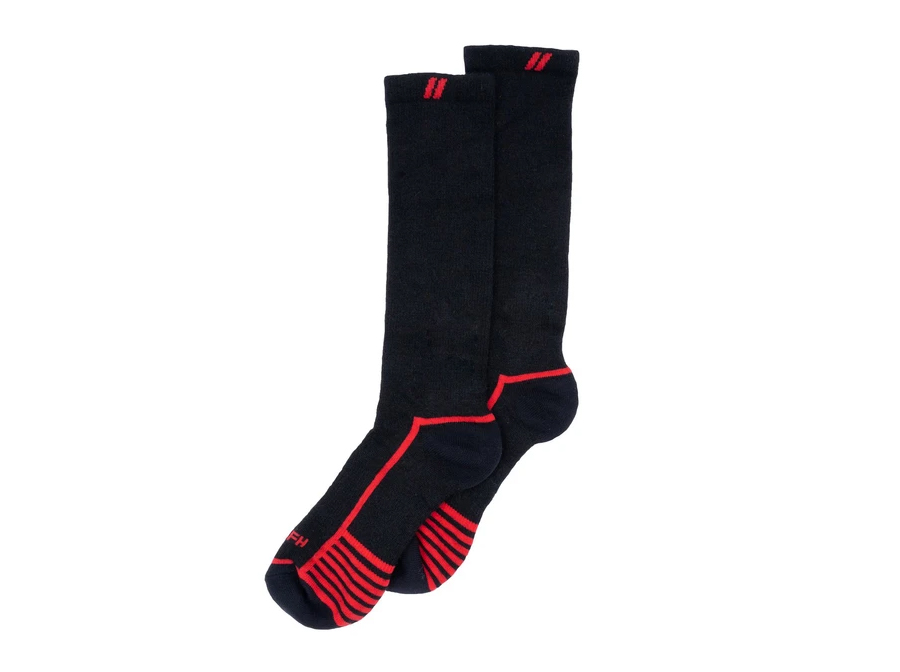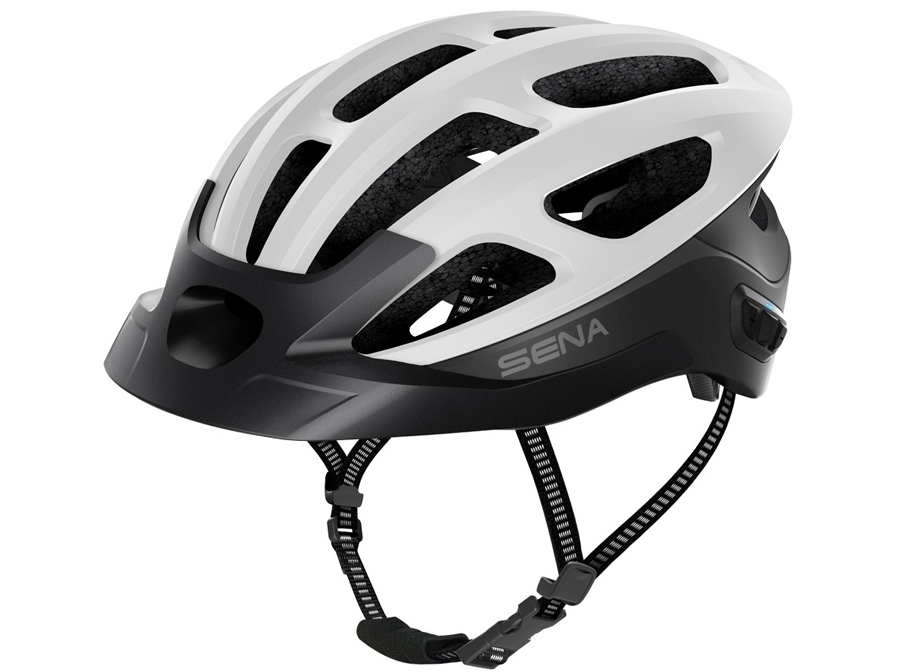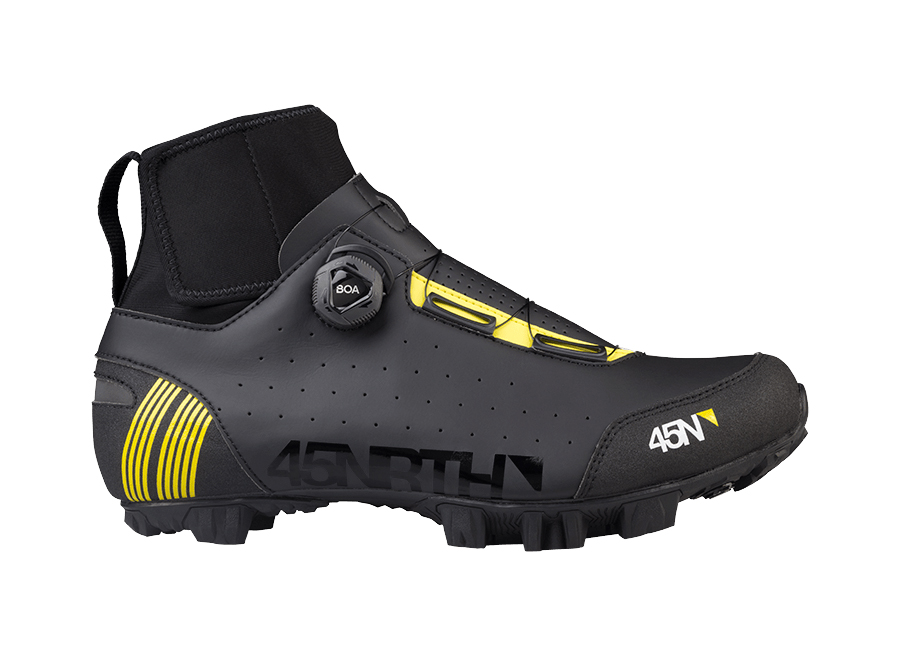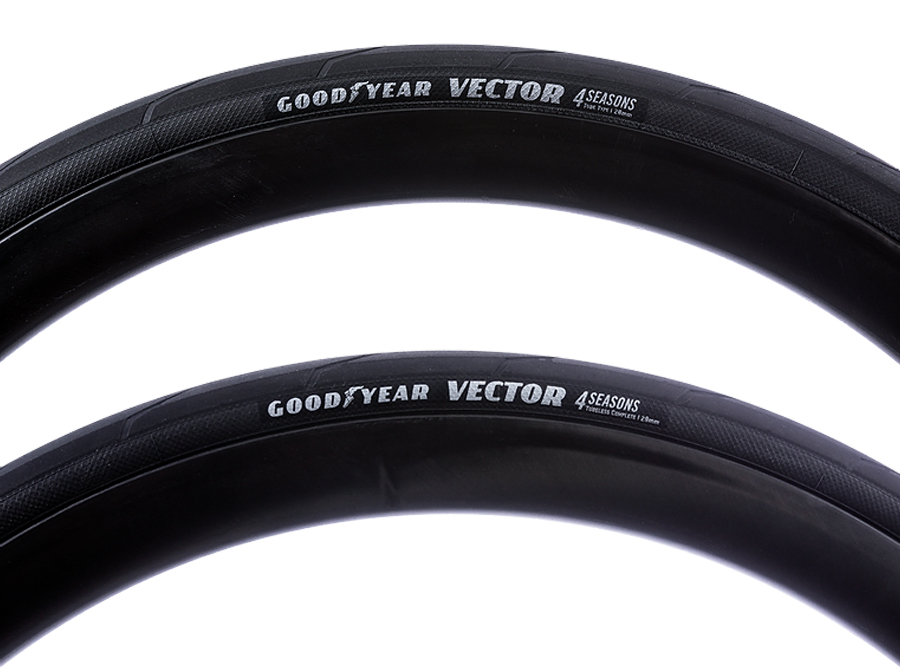Geared Up: Late Winter

Follow Hollow Socks, $25
Alpacas may be adorable Instagram fodder, but it turns out they’re also known for their wool-like fiber (there are some differences, such as a lack of lanolin, and technically alpacas are related to camels, not sheep), which proponents say is superior to even merino. I love merino wool for its comfort and odor resistance, though it can sometimes be a little delicate for hard-wearing applications like socks.
Follow Hollow is the brainchild of Brian Davis, an old friend and serial inventor (his Fix It Sticks have been a mainstay of my on-bike repair kit for years), and he swears by the Peruvian alpaca fiber and its ability to keep feet dry and comfortable. I’ve been wearing a pair of Follow Hollows for a year or more, and indeed they’re darn comfortable socks. Good in boots, good around the house, but for me, a little too thick for regular cycling or running use. The cut is high, nearly calf-height, which is my preferred cycling length, and the shape of the sock itself offered a comfortable fit in a variety of shoes. But the overall fabric weight was too much for my cycling shoes; I’d have needed to go up a half size for optimal comfort. That said, if you like more cushioned socks and wool’s performance, you might give Alpaca a try. –Alex Strickland

Sena R1 EVO, $159
Best known for its integrated Bluetooth communications systems for motorcycle helmets, Sena now offers bicycle helmets — in both road and mountain configurations — with, you guessed it, integrated Bluetooth communications systems.
The R1 EVO tested here has all the high-tech bells and whistles: it’ll connect to your smartphone to let you answer calls, follow GPS directions, or listen to music; it features an integrated taillight with day and night flash settings; it responds to voice commands; and it includes Sena’s Mesh Intercom, a nine-channel Bluetooth communications network that allows you to chat with your fellow cyclists within a claimed half-mile range. And it’s all contained in a pretty sleek package — from a distance, the R1 EVO looks like any other modern road helmet.
Let’s get the negatives out of the way. First, with all that technology packed in there, it’s not a particularly light helmet. After a couple of three-hour rides, I noticed more fatigue in my neck muscles than usual. And worse, I didn’t find it very comfortable. The front of the helmet pressed into my forehead. But all heads are different, so your mileage will vary.
I never felt the need for this kind of tech in a helmet, but boy, it sure is neat. I didn’t bother with the voice commands, nor did I listen to music while riding (something I never do anyway), but I was surprised at how much I enjoyed using the R1 EVO for GPS navigation. After pairing the helmet with my phone and plotting a course on Google Maps, I could stuff my phone into a pocket and leave it there for the whole ride, listening for Google’s navigation prompts as I pedaled. It was refreshingly simple and effective. Likewise, I loved using the Mesh Intercom system while riding with my wife (Sena sent me two helmets for this very purpose). My wife is much faster than me, so it was nice to able to chat about what road we’re turning onto, when she’s about to sprint for a Strava segment, or to warn each other about an inattentive driver. And we could hear each other clearly without yelling while riding on busy roads and on windy days. The downside of those good microphones is that you hear everything. If your riding partner tends to get a bit, uh, mucousy on cold winter rides, you will hear all the horking and snorting and spitting. You will also hear traffic and wind roar through the speakers, but I was always able to hear my wife’s voice clearly over all that noise.
For that long list of features, the R1 EVO is all of $159. That’s not cheap, mind you, but I could show you a list as long as my arm of road helmets costing twice as much. And none of them let you talk to your partner from a half-mile away. –Dan Meyer

45NRTH Ragnarök, $195
The Ragnarök is 45NRTH’s light-duty winter cycling shoe, intended for cool and wet rides and rated for 25°F and up. It features a waterproof membrane, a neoprene ankle cuff, a BOA dial, a two-bolt cleat pattern, and a rubber anti-slip outsole. What it doesn’t have, surprisingly, is much insulation — all that weatherproofing does a fine job of keeping the heat on the inside.
I used the Ragnarök throughout an admittedly mild winter here in Salt Lake City, with most of my riding in temperatures between 30°F and 45°F. In that range, the 45NRTH was ideal, keeping my feet warm and mostly dry. If it got any warmer, or if I climbed some particularly big hills, my feet would get pretty sweaty. In the few rides I did in the high 20s, my toes got a little chilly, but they never really felt cold. The shoe’s waterproof membrane did an admirable job of protecting my feet from the many puddles I rode through, and I especially liked the neoprene cuff to really seal out the elements.
The Ragnarök fits true to size. If you plan on using it at the lower end of its temperature range, I’d recommend sizing up to give you room for thicker socks. And while the outsole is indeed grippy on snow and ice, it’s a pretty stiff shoe, which is great for pedaling efficiency but less so for extended hike-a-bikes. I found the Ragnarök very comfortable, with one exception: my left heel didn’t appreciate the heel cup, but only when off the bike. As soon as I started pedaling, it felt fine.
Note: my pair arrived from 45NRTH with the BOA cord improperly laced on one shoe. It didn’t seem to affect the fit or performance, but I wanted to fix it anyway. The shoes had come with a tiny little BOA tool that I used to unscrew the dial, and then it was a fairly simple matter of fishing out the spool, untying one end of the cord, re-lacing it properly, and then tying it again in the spool before screwing the dial back on. It took me all of 10 minutes and, aside from using my laptop to watch the instructional video on YouTube, was something that could easily be done in the field. –DM

Goodyear Vector 4Seasons, $73
I like to think that I don’t ask too much from my tires. All I really need them to do is hold air, grip the pavement, and not shred to bits from the heaps of broken glass that populate Salt Lake City’s roads. Then again, I’ve found myself this winter riding in all conditions and encountering patches of ice, melting snow, road salt, gravel, rocks, and exciting new forms of detritus (razor blades!). In other words, my tires have been through a lot in a few short months.
The Goodyear Vector 4Seasons tire is, of course, a tire for all seasons, intended for both wet and dry conditions. It features a slick center tread, siping to shed water, and cross-hatching at the edges for cornering grip. The tire’s rubber compound is designed for traction on wet roads, and there’s plenty of puncture protection to keep you rolling.
Goodyear sent me the 700c x 30mm Tubeless Complete model, which was my first foray into tubeless technology for road tires. I had been using tubes on my road bike, so before I installed the Vectors, I applied tubeless tape to my rims and installed tubeless-specific valves. After that, it was a simple matter of throwing the tires on, squirting some sealant inside, and airing them up. Right? Well, the front tire aired up right away, but I found air leaking out of tiny pinprick holes in the rear. I suspect a certain feline had gotten to the tire while it was still in its packaging. A couple more ounces of sealant and a tentative test ride later, and the rear was holding air fine.
The main benefit to tubeless tires for road bikes is the ability to run lower pressure than you would with tubes. Indeed, whereas I’d been running about 80 PSI in my 32mm tubed tires, I was safely running the Vectors between 65 and 70 PSI, which made a noticeable difference in ride quality, especially over rough pavement. Since I installed the Vectors, I haven’t had to do a thing to them aside from air them up before a ride. They’ve shrugged off everything my city’s poor roads have thrown at them without complaint, which makes them winners in my book.
Note: If you prefer tubes, the Vector is also available as a tube-type tire for a little less money, but you still get the same features as the tubeless version. And if you’re looking to try tubeless on your road bike, believe me when I tell you that paying your local mechanic to set it up is money well spent. –DM

